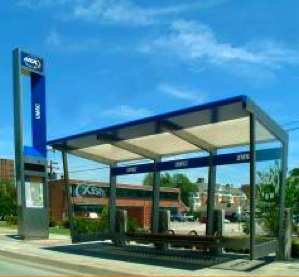No Light Rail in Vancouver!
Transit Follies #4: The Kansas City Light Rail

Today’s entry in the April Fool’s week of transit follies is a sad story of a light-
In 2005, Kansas City did a wonderful thing: It started a bus-

Instead, it simply began running buses on existing streets on rail schedules. That is, the buses stop only once per mile and the operate three to four times every hour from 4:20 am to 11:20 pm. The greater frequencies and faster buses increased ridership by 25 to 30 percent (see page 11), and most of these new riders were new to transit.

The city built inexpensive but easily identifiable transit stops for the route. The buses were regular buses but were “branded,” that is, painted in an easily recognizable style. In short, Kansas City achieved the kind of ridership increases that light rail would achieve for a tiny fraction of the cost.
Now, the city wants to extend this service to seven or eight more routes at a cost
of about $30 million each — less than a tenth of the cost of a similar light-
This measure specifies that, after 2009, the sales tax that currently funds the region’s
bus system would go entirely for light rail. This is supposed to fund one 27-
The measure was put on the ballot by a former Kansas City resident named Clay Chastain.
Chastain was also responsible for at least six earlier Kansas City light-
Chastain’s measure assumes that the federal government will pay half the cost of
the light-
To get out of this dilemma, Kansas City will have to go back to the voters with a
better plan that provides better transit service at a lower cost. Just because Portland
and other cities went light-
2
Trackback • Posted in Planning Disasters, Transportation
Reprinted from The Antiplanner